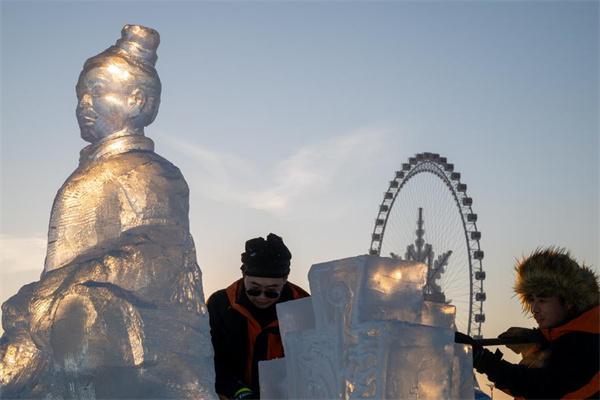

Zhang has been pleased to see how technological advancements have transformed what were once temporary sculptures into enduring marvels.
"Advancements in cold storage technology have allowed ice sculpture artistry to evolve from a seasonal craft into a year-round practice, spreading from northern regions to southern cities in China," he said.
Zhang noted that indoor ice-and-snow galleries in cities like Shenzhen in the south and Shanghai in the east are now able to showcase meticulously crafted ice sculptures, bringing the beauty of the art form to a wider audience.
The reach of Harbin's ice sculptors goes well beyond China. Since the 1960s, they have been committed to sharing Chinese ice sculpting techniques with countries such as the United States, Brazil and South Africa.
"Every year, from mid-October to late November, teams of Harbin ice sculptors travel to U.S. cities like Washington and Orlando to create indoor ice sculptures in refrigerated spaces for Christmas," Zhang said, noting that there are notable stylistic differences between Chinese and international ice sculptures.
He went on to explain that Chinese ice sculptures often emphasize scale, with the large-scale designs at Harbin Ice-Snow World being prime examples, while international ice sculptures tend to be smaller, more intricate, and often feature innovative design concepts.